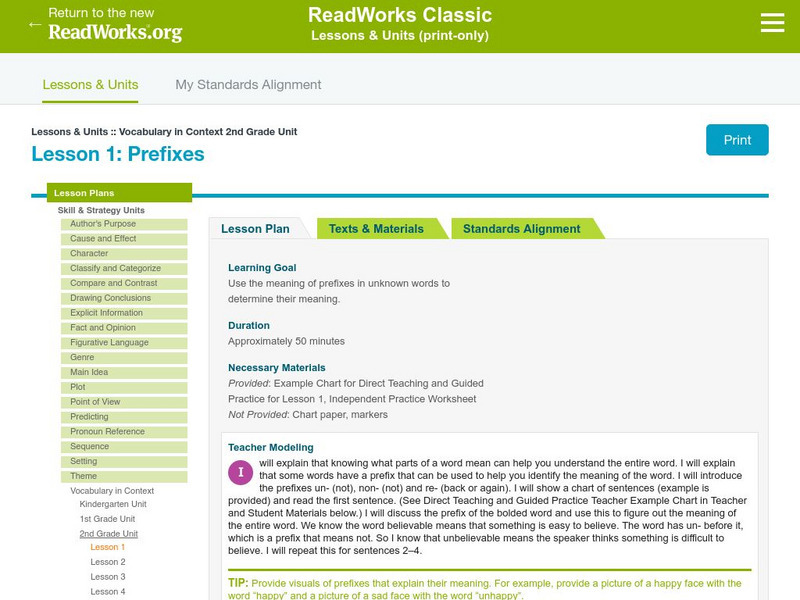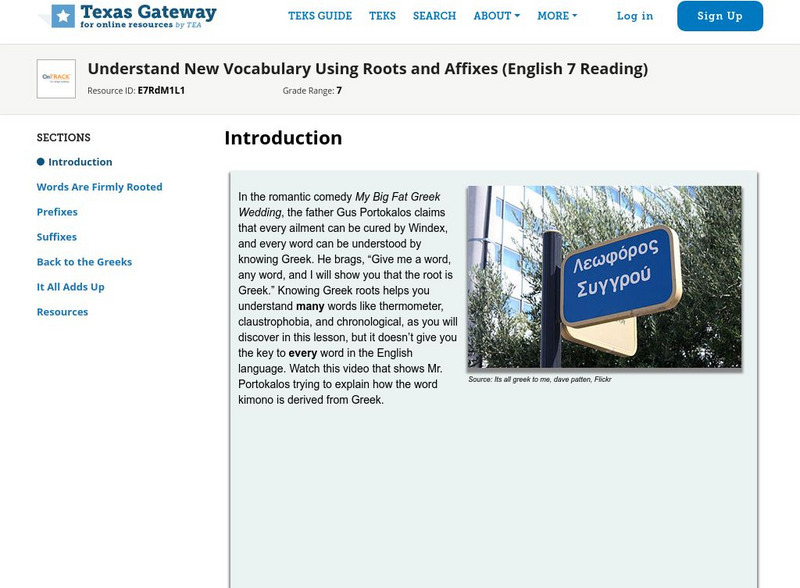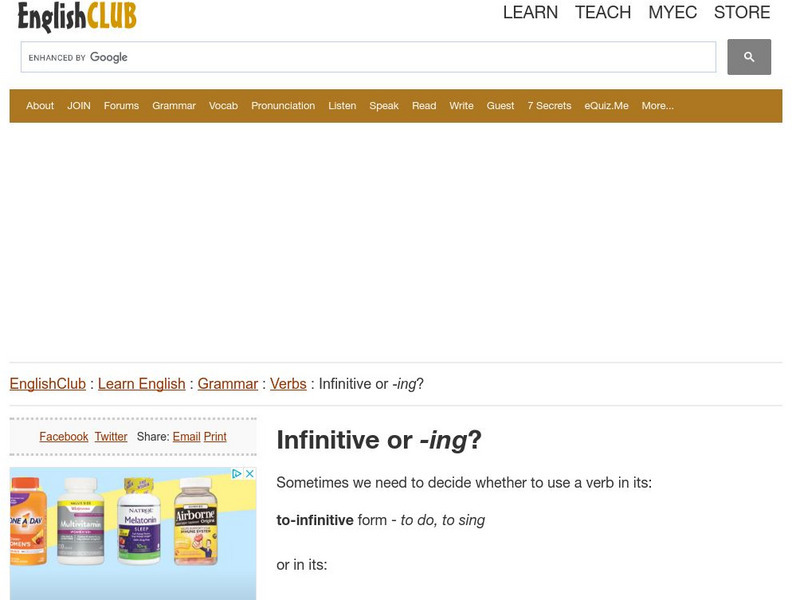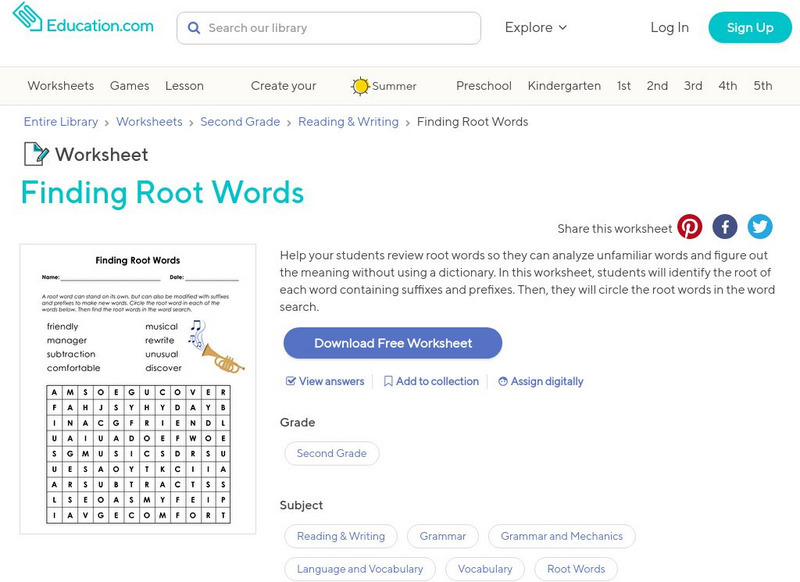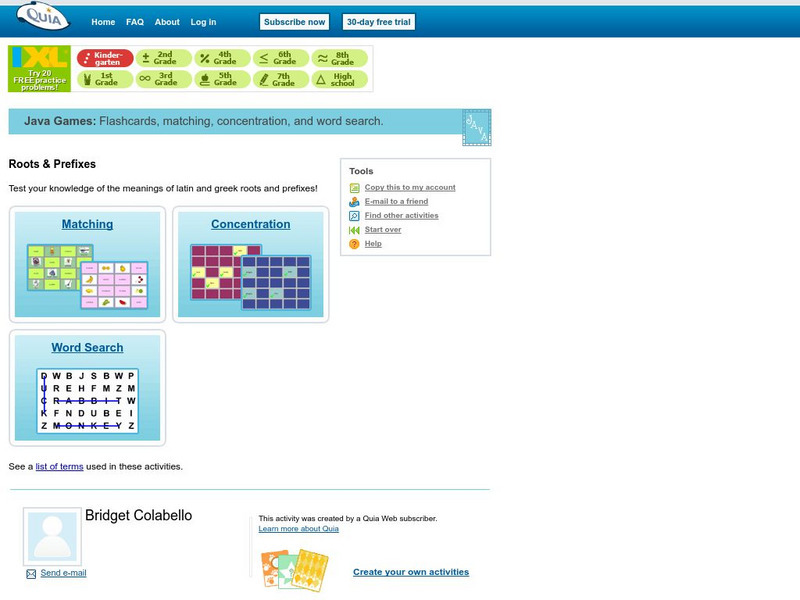Other
How to Study: A Word Identification Strategy
Learn eight steps to help you identify unfamiliar words.
AdLit
Ad lit.org: Key Literacy Component: Morphology
Morphology describes how words are formed from building blocks called morphemes, the smallest unit of meaning in a word. Students who don't understand this structure have trouble recognizing, understanding, and spelling words. Find out...
Grammarly
Grammarly Blog: What Is a Hyphen?
This page explains what hyphens are, what they can do, and provides examples of their uses.
Sophia Learning
Sophia: Prefixes
This lesson focuses on prefixes; it defines prefix, and discusses the purpose of prefixes and how they can change the base word. It also provides a list of common prefixes with their meanings.
Read Works
Read Works: Vocabulary in Context 2nd Grade Unit: Prefixes
[Free Registration/Login Required] A lesson in which learners learn to use the meanings of prefixes to help determine the meanings of unfamiliar words. Lesson includes directions for direct teaching, guided practice, and independent...
Texas Education Agency
Texas Gateway: Understand New Vocabulary Using Roots and Affixes
You will learn how to determine the meaning of grade-level academic English words derived from Latin, Greek, or other linguistic roots and affixes.
Vocabulary.com
Around and Around: Circum
This site contains a list of 10 words that contains "circum-" as a prefix in them. Teachers can digitally assign this list to their students to reinforce the spellings, pronunciations, and meanings of these words.
Vocabulary.com
It Takes Two: Bi
This site contains a list of 10 words that contain the bi- prefix. Teachers can digitally assign this list to their students to reinforce the spellings, pronunciations, and meanings of these words.
Vocabulary.com
Latin Root "Sub" Words
This site contains a list of 10 words that contain "sub", a prefix that means "under" or "below", in them. Teachers can digitally assign this list to their students to reinforce the spellings, pronunciations, and meanings of these words.
Better Lesson
Better Lesson: L.3.4b: Determine the Meaning When a Known Affix Is Added
Links to 5 lessons and activities that build student skills in standard L.3.4b: Determine the meaning of the new word formed when a known affix is added to a known word (e.g., agreeable/disagreeable, comfortable/uncomfortable,...
Learning Farm
Learning Farm: Irregular Words and Phonics
Learn about irregularly spelled words, vowel teams, and inconsistent but common spelling-sound correspondences by watching a review video. Practice what you learned by taking a quiz or playing a game!
BBC
Bbc: Skillswise: Root Words
This Skillswise site focuses on root words. Included are a video about why learning how to identify root words is important, fact sheets and worksheets for instruction, and quizzes on the information presented. The Skillswise sites from...
Other
Spanish411.net: Hispanic Names
Hispanic naming methods are explained on this resource. Spanish surnames, first names, married last names, Children's last names, Spanish middle names, Spanish nicknames, and Spanish suffixes are included on this site.
Other
Learn the Net: Domain Names
This article explains the part of a URL (Web address) called the "domain name," and the meaning of domain name suffixes, such as ".com" and ".org."
English Club
English Club: Learn English: Grammar: Verbs: Infinitive or Ing?
An explanation and examples of when to use verbs in their infinitive form and when to use them with the "ing" suffix.
ClassFlow
Class Flow: Converting Parts of Speech
[Free Registration/Login Required] The ways in which nouns and adjectives e.g. fix, simple, solid, drama, can be made into verbs by use of the suffixes -ate and -en. Investigate spelling patterns and generate rules to govern the patterns.
Dave's ESL Cafe
Dave's Esl Cafe: Verb Forms and Verb Tenses #6: Spelling Ing Forms
Spelling rules and examples for adding the "ing" suffix to the ends of words.
Education.com
Education.com: Finding Root Words
[Free Registration/Login Required] Help your students review root words so they can analyze unfamiliar words and figure out the meaning without using a dictionary. In this worksheet, students will identify the root of each word...
SUNY Empire State College
Empire State College: Hyphens
This site contains information regarding the correct use of the hyphen, along with examples. L.11-12.2a Hyphens
Education.com
Education.com: L.4.4.b Worksheets: Use Greek and Latin Affixes and Roots as Clues
[Free Registration/Login Required] A site with links to 22 worksheets that can be downloaded and printed for student use while building skills with standard L.4.4.B: Use common, grade appropriate Greek and Latin affixes and roots as...
Alabama Learning Exchange
Alex: Changing "Now" Words to "Then" Words
This interdisciplinary lesson teaches first graders to use the inflectional ending -ed to create past tense verbs from present tense verbs. As children learn to use the -ed pattern, they change familiar root words into longer words to...
Quia
Quia: Roots & Prefixes
Tests knowledge of Greek and Latin roots and prefixes, using matching, concentration, and word search formats.
Quia
Quia: Root/base Words
In this learning game, students match words with their correct root word.
ClassFlow
Class Flow: Prefixes
[Free Registration/Login Required] A prefix is a group of letters that go in front of a word. Using a prefix changes the meaning of that word. This lesson will cover the following prefixes: super, sub, un, pre, uni, bi, tri.
Other popular searches
- Prefixes and Suffixes
- Root Words Prefixes Suffixes
- Latin Suffixes
- Affixes Prefixes Suffixes
- Adding Suffixes
- Prefix and Suffixes
- Prefixes Suffixes
- Spelling Rules Suffixes
- Adding Suffixes Ed Ing
- Roots, Prefixes and Suffixes
- Prefixes Suffixes 4th Grade
- Base Words Prefixes Suffixes




